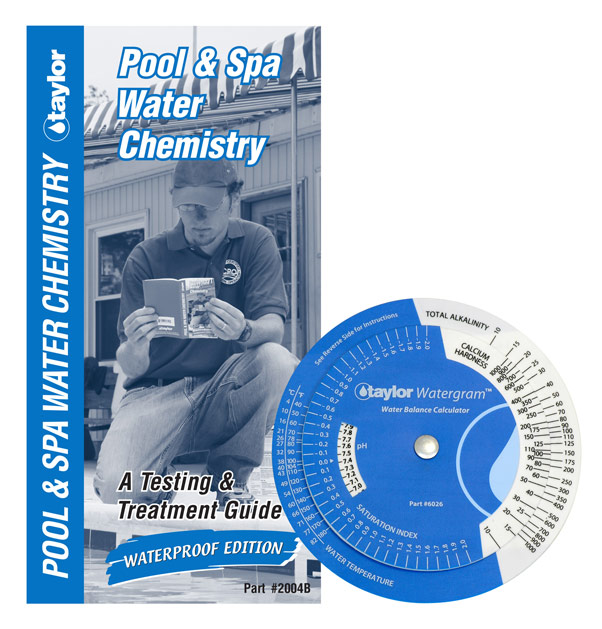Using The Circular Watergram® Water Balance Calculator
The Langelier Saturation Index, often called the "LSI," the "saturation index," or the "stability index," is a numerical value indicating whether or not water is balanced. It is calculated using the formula shown below.
SI = pH + TF + logCH + logALK - CONSTANT, where:
SI = saturation index
pH = measured pH
TF = temperature factor
CH = measured calcium hardness
ALK = measured alkalinity minus cyanurate alkalinity
CONSTANT = combined factor for temperature and ionic strength correction, and concentration conversions
An SI value of zero means water is properly balanced. No chemical adjustment is necessary if the SI is within ±0.5 units of zero; however, conditions producing a value greater than 0.5 may lead to cloudiness and scaling, while conditions producing a value less than -0.5 may cause corrosion of concrete or metal surfaces. (Note: While the cited SI range is commonly taught, the trend now in the pool/spa industry is to recommend a more restrictive range of -0.3 to 0.5 or even -0.3 to 0.3.)
While the SI is a useful calculation, crunching it out poolside could prove troublesome. To simplify the process, Taylor developed the Watergram®, a sliderule-like device used to determine whether water is balanced without performing tedious calculations. Just follow these four simple steps:
- Using test kit, determine pH, Calcium Hardness, and Total Alkalinity of sample water.
- Using Watergram® Water Balance Calculator, set Calcium Hardness opposite Total Alkalinity.
- Hold Calcium Hardness against Total Alkalinity and set arrow to measured pH in window.
- Read Saturation Index opposite Water Temperature. Note: If temperature is not known, use 76°F for pools or 104°F for spas and hot tubs.
See our Pool & Spa Water Chemistry booklet (#2004B) for proper water-chemistry adjustment procedures when you discover scaling or corrosive tendencies.


